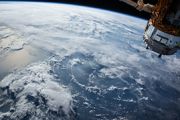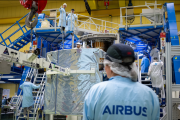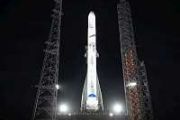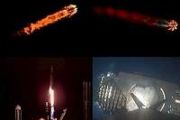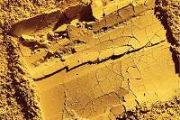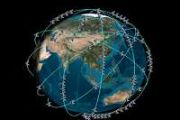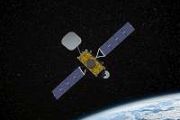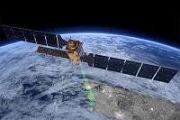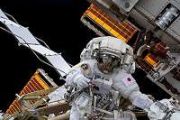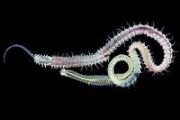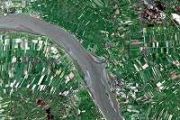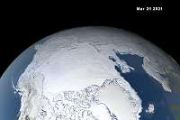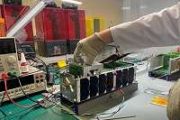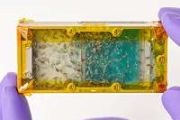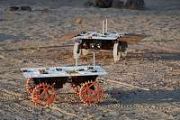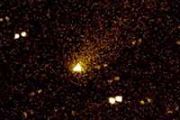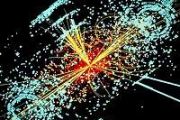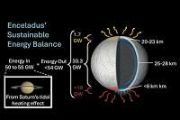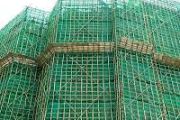
Copernical Team
Axiom Space signs MOU with Italy to expand commercial utilization of space
 Axiom Space, a leader in human spaceflight currently building the world's first commercial space station, has signed a memorandum of understanding (MOU) with the Italian government to further their existing collaboration, including the potential for the development of space infrastructure integrated with the future Axiom Station. The agreement was signed by the President and CEO of Axiom Space,
Axiom Space, a leader in human spaceflight currently building the world's first commercial space station, has signed a memorandum of understanding (MOU) with the Italian government to further their existing collaboration, including the potential for the development of space infrastructure integrated with the future Axiom Station. The agreement was signed by the President and CEO of Axiom Space, Omnispace Spark-2 satellite launched into orbit
 Omnispace and Thales Alenia Space, a joint venture between Thales (67%) and Leonardo (33%), reports a successful launch and delivery of "Omnispace Spark-2" satellite into orbit. This marks the completion of the deployment phase of the "Omnispace Spark" program, the initial phase in the company's development and delivery of the world's first 5G capable satellite network.
Omnispace Spark-1,
Omnispace and Thales Alenia Space, a joint venture between Thales (67%) and Leonardo (33%), reports a successful launch and delivery of "Omnispace Spark-2" satellite into orbit. This marks the completion of the deployment phase of the "Omnispace Spark" program, the initial phase in the company's development and delivery of the world's first 5G capable satellite network.
Omnispace Spark-1, Astrocast acquires Hiber, accelerates OEM strategy.
 Astrocast, a leading global nanosatellite IoT network operator, has announced the signature of an agreement to acquire Hiber, a Netherlands-based, IoT-as-a-Service provider. Under the agreement, Astrocast agreed to acquire all of Hiber's shares in exchange for the issuance of new Astrocast shares, representing 16.5% of Astrocast's share capital, calculated prior to its previously announced publi
Astrocast, a leading global nanosatellite IoT network operator, has announced the signature of an agreement to acquire Hiber, a Netherlands-based, IoT-as-a-Service provider. Under the agreement, Astrocast agreed to acquire all of Hiber's shares in exchange for the issuance of new Astrocast shares, representing 16.5% of Astrocast's share capital, calculated prior to its previously announced publi NASA targets June 5 for redo of Artemis moon rocket dress rehearsal
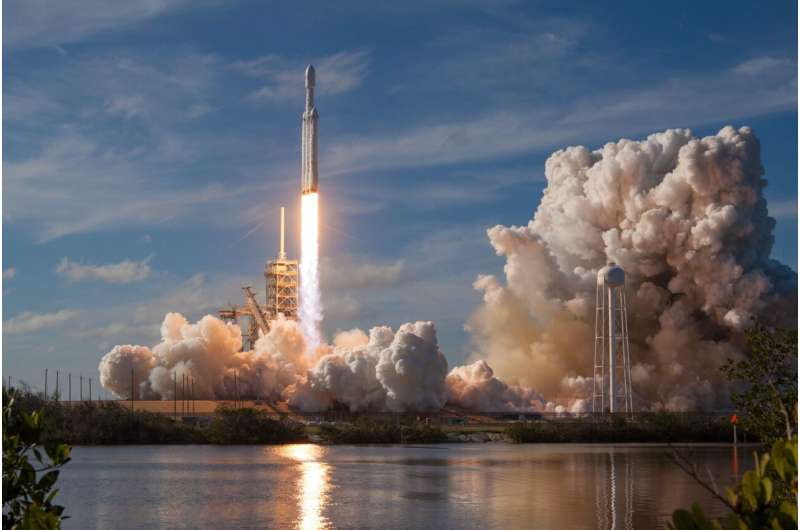
NASA discovered a bevy of headaches in its first three tries to run through a dress rehearsal countdown of the Artemis I moon rocket at Kennedy Space Center earlier this year. Now it's ready for attempt No. 4.
The agency is targeting a call-to-stations on Sunday, June 5, with a start of rollout at midnight, June 6, for the 4.4-mile, 11-hour journey from the Vehicle Assembly Building back to Launch Pad 39-B.
The 5.75 million-pound, 322-foot-tall combination of the Space Launch System, Orion capsule and mobile launcher first made the trip on March 18 on the crawler-transporter 2, after which NASA attempted several times to complete the goal of filling and draining the core and upper stage with 730,000 gallons of super-cooled liquid hydrogen and liquid oxygen while also simulating a countdown but without lighting the engines.
A series of pressure and valve issues stymied any completion of those tests and NASA managers decided to roll the lunar rocket back to the VAB. That allowed managers to solve the mystery of a malfunctioning 3-inch check valve in the upper stage that wasn't working on the pad.
Post-flight interview with Matthias Maurer | Cosmic Kiss
 Video:
00:07:10
Video:
00:07:10
Interview with ESA astronaut Matthias Maurer after the conclusion of his 177-day mission on the International Space Station. During his time in orbit, Matthias supported over 35 European experiments and even more international experiments on board. The outcomes of these experiments will advance our knowledge in areas ranging from human health to materials science, benefiting life on Earth and the future of space exploration. Other highlights included his spacewalk to improve and maintain the Space Station. More about the Cosmic Kiss mission: https://www.esa.int/cosmickiss
Revisit Living Planet Symposium: watch session replays
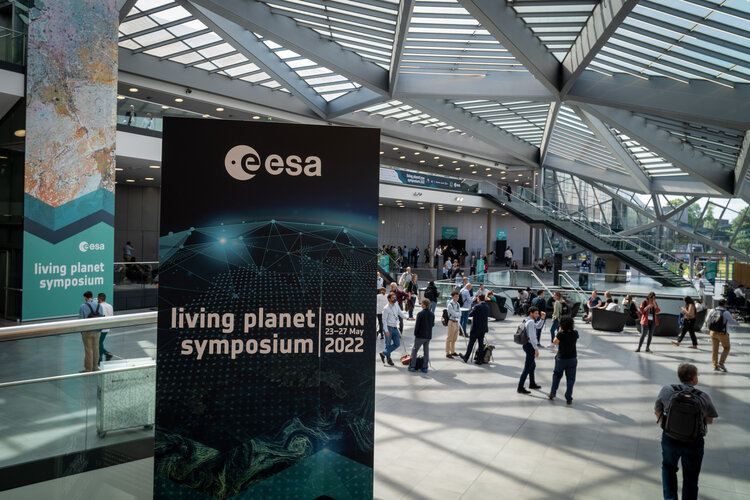
Revisit Living Planet Symposium: watch session replays
Tiny robotic crab is smallest-ever remote-controlled walking robot
 Northwestern University engineers have developed the smallest-ever remote-controlled walking robot - and it comes in the form of a tiny, adorable peekytoe crab.
Just a half-millimeter wide, the tiny crabs can bend, twist, crawl, walk, turn and even jump. The researchers also developed millimeter-sized robots resembling inchworms, crickets and beetles. Although the research is exploratory a
Northwestern University engineers have developed the smallest-ever remote-controlled walking robot - and it comes in the form of a tiny, adorable peekytoe crab.
Just a half-millimeter wide, the tiny crabs can bend, twist, crawl, walk, turn and even jump. The researchers also developed millimeter-sized robots resembling inchworms, crickets and beetles. Although the research is exploratory a DLR presents technologies for decarbonisation across the economy
 The German Aerospace Center will be presenting technologies, innovations and successful transfer and spin-off projects at Hannover Messe 2022. From 30 May to 2 June, at the 120-square-metre stand (Energy Solutions, Hall 13, D18), visitors will be able to gain an insight into DLR's research for a future climate-friendly energy supply system and for the decarbonisation of industrial processes and
The German Aerospace Center will be presenting technologies, innovations and successful transfer and spin-off projects at Hannover Messe 2022. From 30 May to 2 June, at the 120-square-metre stand (Energy Solutions, Hall 13, D18), visitors will be able to gain an insight into DLR's research for a future climate-friendly energy supply system and for the decarbonisation of industrial processes and AI and machine learning are improving weather forecasts, but they won't replace human experts
 A century ago, English mathematician Lewis Fry Richardson proposed a startling idea for that time: constructing a systematic process based on math for predicting the weather. In his 1922 book, "Weather Prediction By Numerical Process," Richardson tried to write an equation that he could use to solve the dynamics of the atmosphere based on hand calculations.
It didn't work because not enoug
A century ago, English mathematician Lewis Fry Richardson proposed a startling idea for that time: constructing a systematic process based on math for predicting the weather. In his 1922 book, "Weather Prediction By Numerical Process," Richardson tried to write an equation that he could use to solve the dynamics of the atmosphere based on hand calculations.
It didn't work because not enoug Space Systems Command Issues Launch Task Orders for FY22 NSS Missions
 Space Systems Command (SSC) ordered eight National Security Space (NSS) launch services under the National Security Space Launch (NSSL) Phase 2 Launch Service Procurement contract Friday; five to United Launch Alliance (ULA) for GPS III-7, USSF-23, USSF-43, WGS-11+, and USSF-16 using the Vulcan Centaur launch vehicle, and three to Space Exploration Technologies Corp (SpaceX) for USSF-124, USSF-6
Space Systems Command (SSC) ordered eight National Security Space (NSS) launch services under the National Security Space Launch (NSSL) Phase 2 Launch Service Procurement contract Friday; five to United Launch Alliance (ULA) for GPS III-7, USSF-23, USSF-43, WGS-11+, and USSF-16 using the Vulcan Centaur launch vehicle, and three to Space Exploration Technologies Corp (SpaceX) for USSF-124, USSF-6 
